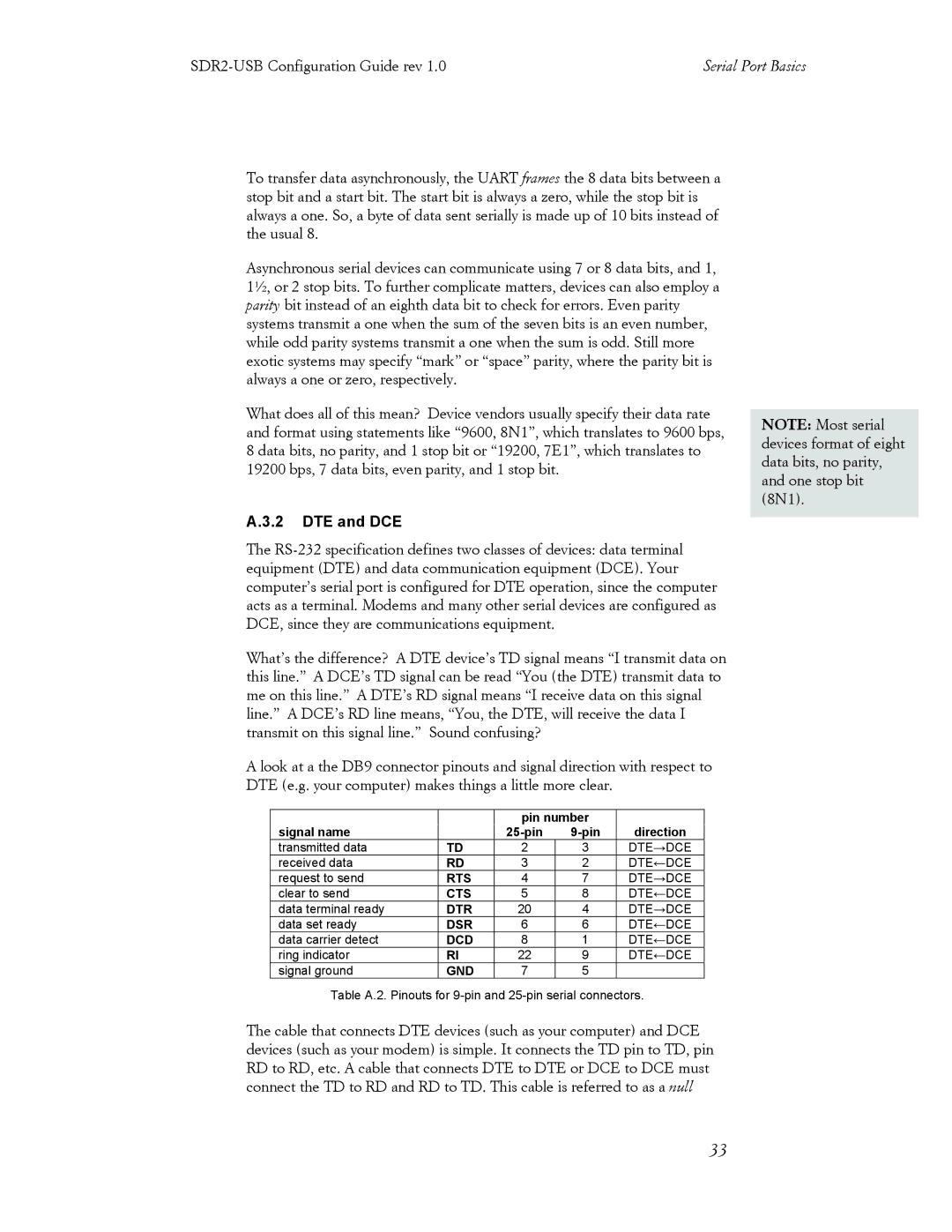
Serial Port Basics |
To transfer data asynchronously, the UART frames the 8 data bits between a stop bit and a start bit. The start bit is always a zero, while the stop bit is always a one. So, a byte of data sent serially is made up of 10 bits instead of the usual 8.
Asynchronous serial devices can communicate using 7 or 8 data bits, and 1, 1½, or 2 stop bits. To further complicate matters, devices can also employ a parity bit instead of an eighth data bit to check for errors. Even parity systems transmit a one when the sum of the seven bits is an even number, while odd parity systems transmit a one when the sum is odd. Still more exotic systems may specify “mark” or “space” parity, where the parity bit is always a one or zero, respectively.
What does all of this mean? Device vendors usually specify their data rate and format using statements like “9600, 8N1”, which translates to 9600 bps, 8 data bits, no parity, and 1 stop bit or “19200, 7E1”, which translates to 19200 bps, 7 data bits, even parity, and 1 stop bit.
A.3.2 DTE and DCE
The
What’s the difference? A DTE device’s TD signal means “I transmit data on this line.” A DCE’s TD signal can be read “You (the DTE) transmit data to me on this line.” A DTE’s RD signal means “I receive data on this signal line.” A DCE’s RD line means, “You, the DTE, will receive the data I transmit on this signal line.” Sound confusing?
A look at a the DB9 connector pinouts and signal direction with respect to DTE (e.g. your computer) makes things a little more clear.
|
| pin number |
| |
signal name |
| direction | ||
transmitted data | TD | 2 | 3 | DTE→DCE |
received data | RD | 3 | 2 | DTE←DCE |
request to send | RTS | 4 | 7 | DTE→DCE |
clear to send | CTS | 5 | 8 | DTE←DCE |
data terminal ready | DTR | 20 | 4 | DTE→DCE |
data set ready | DSR | 6 | 6 | DTE←DCE |
data carrier detect | DCD | 8 | 1 | DTE←DCE |
ring indicator | RI | 22 | 9 | DTE←DCE |
signal ground | GND | 7 | 5 |
|
Table A.2. Pinouts for
The cable that connects DTE devices (such as your computer) and DCE devices (such as your modem) is simple. It connects the TD pin to TD, pin RD to RD, etc. A cable that connects DTE to DTE or DCE to DCE must connect the TD to RD and RD to TD. This cable is referred to as a null
NOTE: Most serial devices format of eight data bits, no parity, and one stop bit (8N1).
33
